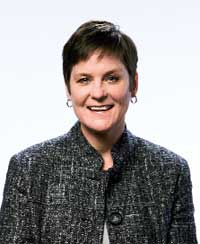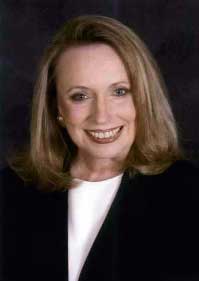|
Agent of change
DBH works with agencies to realize their strategic vision
By Michael J. Moody, MBA, ARM
The United States insurance agency distribution system is changing. No big news flash there—over the past 20 to 25 years, the system has moved through a variety of changes. Everything from strategic to operational efficiencies has made the agency distribution system more competitive than ever. And it is not over yet.
One constant has been the interest in agency mergers and acquisitions. In recent years, much of this interest has been directed at the acquisition activity of banks or private equity firms. While the economic recession has slowed activity in that area, the reality is that many firms today are a combination of agencies, frequently operating with a change of control and now struggling in this economy to grow organically. It is more important than ever to have a growth strategy in place that is in alignment with a common vision.
Agency growth 101
Karen K. Farris, CPCU, ARM, president and CEO of Dallas-based Roach Howard Smith & Barton, points out, “The good news is that we are independent agents by nature, and there are lots of pluses to that.” However, she is also quick to note, “The bad news is that we are independent agents by nature, and sometimes it gets in the way of operating as a seamless organization. One of the biggest challenges faced by any CEO is to align the goals, the objectives and the vision of a diverse group of shareholders. The easy part is to build infrastructure to support that vision; the difficult part is to arrive at that common vision. Our agency wanted a strategic planning process that would help it arrive at a common vision and then put into motion the steps to execute that plan.”
In that regard, the agency asked several of its Assurex partners for recommendations of organizations that could guide them in this planning process. DBH Consulting was one of two names that kept coming up. The agency was already familiar with DBH since it had become involved with specialty errors and omissions underwriter Professional Agencies Reinsurance, Ltd. (PAR) for which DBH helped establish quality management. Based on this relationship and recommendations from others, Farris decided to retain DBH to assist with their growth plans.
Demmie Hicks, president of DBH Consulting, notes that her firm specializes in growth planning. She points out that DBH’s work is “about growing a client’s organization, and looking at everything in their organization that impacts that growth, positively or negatively.” In addition, she says that unlike most other consultants, “in our model, we do not tell our clients what to do. But rather, we model how to work together to get things done and this starts at the leadership level.”
Hicks has developed a unique business model where her firm works “to become part of our client’s growth team, by working with the agency’s leadership team as a facilitator.” She points out that while her clients do the work, “DBH is there observing and facilitating their growth.” She says they realized long ago that their clients know more about their own operations than DBH could ever know. “They know their strengths, their challenges, and their people.” But she indicates, “all too often they get ‘stuck,’ and what we do is observe and facilitate the conversations they need to have in order to take action and get results.” And she says, “It’s these crucial conversations that are so important and can make the difference in growing or not growing.”
Beyond strategic management
According to Hicks, her work goes beyond typical strategic planning consulting. “While there is certainly a strategic planning piece to this,” she states, “our client engagements are what we consider ‘The DBH Growth Planning Process (GPP).’ ” And this is the key to DBH Consulting’s approach. “Strategic management by its nature has a tone that is only at the top of the organization—CEO and Executive Committee,” she indicates. However, Hicks believes that it is necessary to bring this down from the top tier because “it is not only the leaders that will give it the energy it needs to make it happen. It’s all the people in the organization that make growth happen.”
The big question ultimately is, “What is it going to take to reach your stated vision and goals?” The challenge, according to Hicks, for organizations today, is understanding how an agency’s culture supports or hinders its growth. Having a well-developed discipline for planning, execution, and accountability and making sure that the initiatives in the plan are the initiatives that will support the agency’s growth.
Agencies need to take stock of the things that got them where they are. “Those are the things that are typically embedded in the fabric of the organization.” But, this is not the total answer, since changes may be needed to properly assimilate a merger. Hicks says, “We’re not talking about value changes, because those are the heartbeat of the company. Rather, we’re talking about cultural changes.” For example, some firms have prided themselves on their customer centric culture that has gotten them to where they are today. However, Hicks says, “In order to grow, the agency may have to add a stronger sales culture, “not abandoning their customer service, but adding the sales culture.” And it is very important to develop a sales culture that can get staff excited about new business, for example, she believes. This way, the production staff can create new business relationship, in addition to maintaining and retaining an existing book of business.
Real growth is critical
While growth is an important element in today’s agency distribution market, Hicks says that “growth is not asking the question how do we maintain what got us here; growth is about asking ourselves, what got us here and what do we want to keep and what do we want to change?” For the most part, growth demands that organizations make necessary strategic and operational changes throughout the organization in order to continue to grow. These will be the things that “create the attitudes and behaviors that will ultimately drive the growth,” Hicks says. DBH’s Growth Planning Process allows DBH to facilitate these types of conversations with the agency’s key staffers. Hicks points out this is the only way to find out what the organization wants and assure that they are responsive for executing the plan.
While there are many parts to the GPP, the primary point is that it is necessary to get all the parties “working together in an engaged, energized way with all of the stakeholders.” In order to do this, Hicks says, “We must see where their interest is, what motivates them. What the growth initiatives are that the stakeholders believe will help them grow.”
According to Hicks, “The real question is how can we motivate and inspire people to make this action plan happen?” Implementation of the Growth Planning Process can help solve this question. At the end of the day, DBH Consulting assists its clients by “helping them see what they are doing well, what’s keeping them from growing and then holding them accountable for what they say they want.”
Conclusion
DBH’s tag line says, “We help agents grow.” Karen Farris will attest that the way Hicks does this is by helping them face and remove internal obstacles and embedded culture that often get in the way of that growth. “When we started the strategic planning process, it became clear to us that we needed to strengthen our sales culture—but only after looking in the mirror and admitting that we were not functioning as a true sales organization. That was difficult but a necessary part of the process that repositioned us and helped us move forward as a much stronger organization.”
Hicks has built her consulting firm on her belief in the insurance industry and the agent/broker community that supports it. “We are committed to those agents and brokers who recognize that, ultimately it’s their people who have fueled their growth,” Hicks asserts. She realizes that it’s the people and the energy they bring that add so much to the richness of the community. And she says, “We want to be involved with those organizations that live that dream.”
|
|
| |
“We assist our clients by helping them see what they are doing well, what’s keeping them from growing and then holding them accountable for what they say they want.”
—Demmie Hicks
President
DBH Consulting |
| |

|
| |
“One of the biggest challenges faced by any CEO is to align the goals, the objectives and the vision of a diverse group of shareholders.”
—Karen K. Farris
President and CEO
Roach Howard Smith & Barton
Dallas, Texas |
| |

|
|